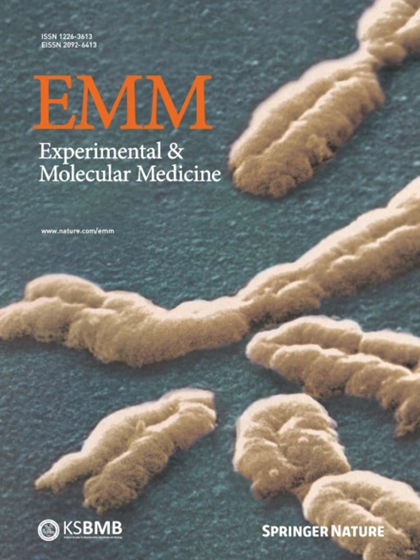红细胞生成:从基因组角度看问题。
IF 9.5
2区 医学
Q1 BIOCHEMISTRY & MOLECULAR BIOLOGY
引用次数: 0
摘要
红细胞生成是氧运输所必需的红细胞生成过程的基础,涉及造血干细胞向成熟红细胞的发育。本综述重点探讨转录因子和表观遗传机制在调节红细胞分化关键基因表达中的重要作用。它强调染色质重塑在确保基因可及性方面的重要意义,而基因可及性是红细胞生成有序进行的关键因素。这篇综述还讨论了这些过程的失调如何导致红细胞生成障碍,并探讨了基因组编辑和基因疗法作为创新治疗方法的前景。通过揭示红细胞生成的基因组调控,本综述提出了治疗血液病的新方法,强调了继续进行分子研究以改善人类健康的必要性。本文章由计算机程序翻译,如有差异,请以英文原文为准。

Erythropoiesis: insights from a genomic perspective
Erythropoiesis, the process underlying the production of red blood cells, which are essential for oxygen transport, involves the development of hematopoietic stem cells into mature red blood cells. This review focuses on the critical roles of transcription factors and epigenetic mechanisms in modulating gene expression critical for erythroid differentiation. It emphasizes the significance of chromatin remodeling in ensuring gene accessibility, a key factor for the orderly progression of erythropoiesis. This review also discusses how dysregulation of these processes can lead to erythroid disorders and examines the promise of genome editing and gene therapy as innovative therapeutic approaches. By shedding light on the genomic regulation of erythropoiesis, this review suggests avenues for novel treatments for hematological conditions, underscoring the need for continued molecular studies to improve human health. Understanding how our bodies produce red blood cells, a process called erythropoiesis, is vital for treating blood disorders. Researchers have reviewed the stages of erythropoiesis, focusing on the genetic and molecular factors that influence the development of red blood cells. Erythropoiesis starts with stem cells in the bone marrow, which transform into several stages of red blood cell precursors before becoming mature, oxygen-carrying cells. The review emphasizes the role of specific growth factors, like erythropoietin, and transcription factors, proteins that activate or deactivate specific genes, in guiding these developmental stages. It also discusses how manipulating these factors in the lab can produce red blood cells outside of the body, a technique that could have therapeutic uses. By targeting the specific genes and pathways involved in red blood cell development, researchers can develop more effective treatments. This summary was initially drafted using artificial intelligence, then revised and fact-checked by the author.
求助全文
通过发布文献求助,成功后即可免费获取论文全文。
去求助
来源期刊

Experimental and Molecular Medicine
医学-生化与分子生物学
CiteScore
19.50
自引率
0.80%
发文量
166
审稿时长
3 months
期刊介绍:
Experimental & Molecular Medicine (EMM) stands as Korea's pioneering biochemistry journal, established in 1964 and rejuvenated in 1996 as an Open Access, fully peer-reviewed international journal. Dedicated to advancing translational research and showcasing recent breakthroughs in the biomedical realm, EMM invites submissions encompassing genetic, molecular, and cellular studies of human physiology and diseases. Emphasizing the correlation between experimental and translational research and enhanced clinical benefits, the journal actively encourages contributions employing specific molecular tools. Welcoming studies that bridge basic discoveries with clinical relevance, alongside articles demonstrating clear in vivo significance and novelty, Experimental & Molecular Medicine proudly serves as an open-access, online-only repository of cutting-edge medical research.
 求助内容:
求助内容: 应助结果提醒方式:
应助结果提醒方式:


